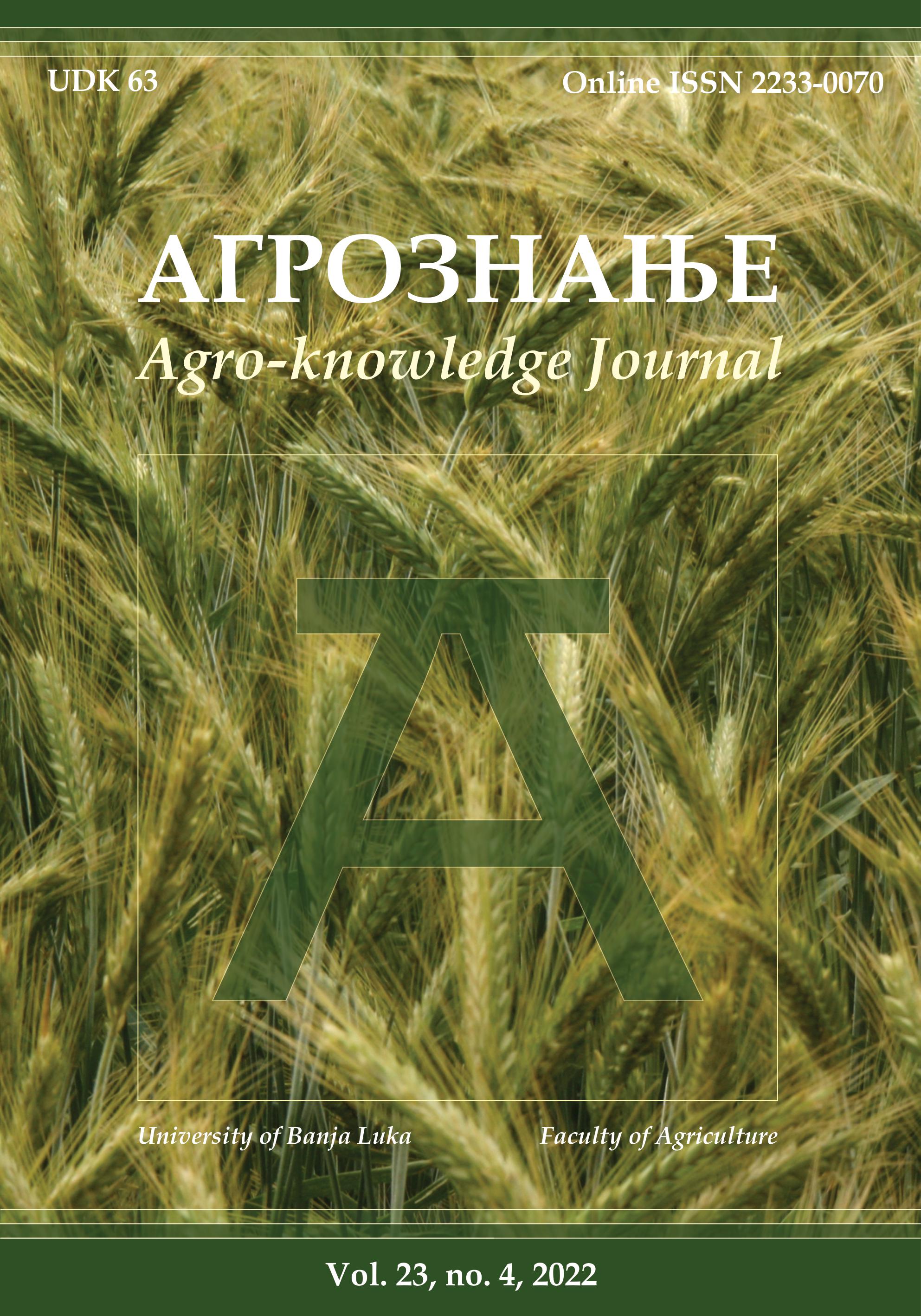Land suitability for the cultivation of corn (Zea mays) in the municipality of Bužim
Погодност земљишта општине Бужим за узгој кукуруза (Zea mays)
DOI:
https://doi.org/10.7251/AGREN2204199IAbstract
Rational use of available land is of great importance for the economic development of every society, especially considering the fact that soil is the primary production resource, thereby placing an even greater importance on its protection and conservation, but also on the correct use of it. This paper focuses on the municipality of Bužim, located in the north/western part of Bosnia and Herzegovina, where the soil suitability for the purposes of corn cultivation were assessed and examined by using the FAO (1976) methodology of AEZ (agroecological zoning), which uses input data such as soil characteristics, climate change, relief patterns of the investigated area, and the requirements of the agricultural crops. Within the municipality of Bužim, 13,026.27 ha of the land is used for agricultural purposes. In regards with the corn, one distinguishes between two categories ofsoil suitability: the suitable classes (S1, S2, S3), which occupy more than 43.44% of the land surface, and the unsuitable class (the N class), which only occupies 0.94% of the land surface. Thus, it can be concluded that conditions necessary for corn do exist within the municipality of Bužim, in the form of land resources, and higher yields can be achieved by implementing landscaping measures and introducing new corn varieties in accordance with the latest scientific and expert achievements.
Key words: Agroecological zoning, Municipality of Bužim, soil suitability, corn.

